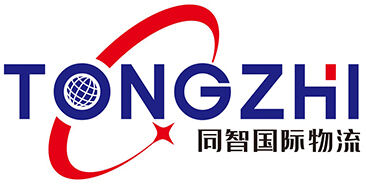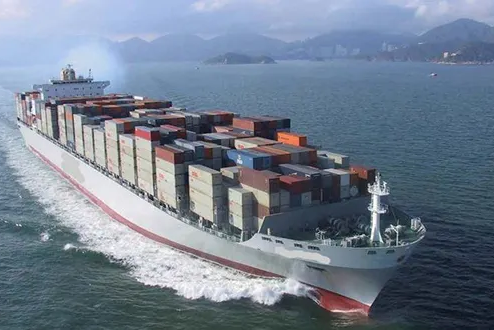Containervervoer is de ruggegraat van de wereldhandel, wat het efficiënt en veilig vervoer van goederen over de hele wereld mogelijk maakt. Met de steeds toenemende vraag naar internationale handel moeten bedrijven de nuances van containervervoer begrijpen om hun logistieke operaties te optimaliseren. Dit artikel verkent de beste praktijken en belangrijke overwegingen voor het maximaliseren van efficiëntie in containervervoer.
Inzicht in containervervoer
Containervervoer houdt in dat goederen worden vervoerd in grote, gestandaardiseerde containers. Deze containers komen in verschillende maten voor, met de meest voorkomende zijnde de 20-voet en 40-voet containers. De standaardisatie stelt het naadloos overbrengen tussen schepen, vrachtwagens en treinen mogelijk, waardoor het een veelzijdige en efficiënte vorm van vervoer is.
Belangrijkste voordelen van containervervoer
Efficiëntie: Containers zijn ontworpen voor gemakkelijk hanteren en stapelen, wat het in- en uitladen bij haventerminals versnelt. Deze efficiëntie resulteert in kortere transporttijden en lagere kosten.
Veiligheid: Goederen die per container worden vervoerd, zijn minder vatbaar voor schade en diefstal. De robuuste constructie van containers biedt uitstekende bescherming tegen de elementen en eventuele inbraakpogingen.
Kosten-effectiviteit: Containervervoer is in het algemeen kosteneffectiever dan andere vormen van transport, vooral voor internationale langeafstandsleveringen. Het vermogen om meerdere leveringen samen te bundelen in één container verlaagt de kosten verder.
Veelhoekigheid: Containers kunnen een breed scala aan goederen vervoeren, van grondstoffen en machinery tot bederfbare producten en afgeronde producten. Gespecialiseerde containers, zoals gekoelde eenheden (reefers), voldoen aan specifieke behoeften zoals temperatuurregeling.
Beste praktijken voor containervervoer
Kies het juiste container type
De keuze voor het juiste container type is cruciaal voor het veilig en efficiënt vervoeren van goederen. Standaard droge containers zijn geschikt voor de meeste soorten cargo, maar bedrijven dienen gespecialiseerde containers in overweging te nemen voor specifieke behoeften:
Gekoelde containers (Reefers): Voor bederfbare goederen die temperatuurregeling vereisen.
Open-top containers: Voor oversized cargo die niet in een standaardcontainer past.
Flat rack containers: Voor zware en bulkige items zoals machinery en voertuigen.
Optimaliseer containergebruik
Het maximaliseren van de beschikbare ruimte binnen een container kan de verzendkosten aanzienlijk verlagen. Bedrijven dienen:
Goed inpakken en stapelen van goederen: Zorg ervoor dat goederen strak en veilig worden ingepakt om te voorkomen dat ze tijdens het vervoer verschuiven.
Gebruik pallets en schotten: Bevorder gemakkelijk hanteren en efficient gebruik van ruimte.
Gewichtsbalance distribueren: Verdeel het gewicht gelijkmatig om stabiliteit te behouden en schade te voorkomen.
Geavanceerde track-and-trace systemen implementeren
Real-time tracking en monitoring van zendingen bieden waardevolle inzichten en verhogen de zichtbaarheid gedurende het hele verzendproces. Geavanceerde trackingsystemen bieden:
Real-time locatie-updates: Houd bedrijven op de hoogte van de locatie en status van hun zendingen.
Toestandsmonitoring: Zorg ervoor dat temperatuurgevoelige goederen binnen de vereiste bereiken blijven.
Predictieve analytics: Anticipeer op potentiële vertragingen en optimaliseer routes voor snellere levering.
Zorgen voor naleving van regels
Naleving van internationale verzendregels is essentieel om vertragingen en boetes te voorkomen. Bedrijven dienen:
Blijf op de hoogte van handelsregels: Houd je bijgewerkt over invoer/exportwetten en douaneverplichtingen voor elk bestemmingland.
Maak nauwkeurige documentatie: Zorg ervoor dat alle benodigde documenten, zoals goederenbewijzen, oorsprongsattesten en douanedeklaraties, correct ingevuld en op tijd ingediend worden.
Werk samen met ervaren douanebrokers: Bevorder soepele douaneafhandeling en minimaliseer het risico op nalevingsproblemen.
Uitbaten van technologie voor verbeterde efficiëntie
Technologie speelt een cruciale rol in de optimalisatie van containervervoeroperaties. Bedrijven dienen te adopteren:
Vrachtbeheersoftware: Stroomlijn boeken, documentatie en trackingprocessen.
Gautomatiseerde goederenafhandelingsystemen: Versnellen van in- en uitlaadoperaties in havens.
Blockchain-technologie: Verhoog transparantie en veiligheid in de supply chain door een onveranderbaar register van transacties en bewegingen te bieden.
Belangrijke overwegingen bij containervervoer
Kostenbeheer
Verzendkosten kunnen aanzienlijk invloed hebben op de winstgevendheid van een bedrijf. Belangrijke strategieën voor het beheren van kosten omvatten:
Samenvoegen van zendingen: Combineer meerdere zendingen in één container om voordelen te behalen uit schaalvoordelen.
Contractonderhandelingen: Behaal gunstige tarieven en voorwaarden met verzendmaatschappijen en vrachtbemiddelaars.
Optimaliseren van routes: Selecteer de meest efficiënte en kosteneffectieve routes om transit-tijden te minimaliseren en brandstofverbruik te verminderen.
Risicobeheer
Risicobeheer bij containerverzending is essentieel om de veilige en punctuele levering van goederen te waarborgen. Overweeg het volgende:
Verzekeringsdekking: Bescherm tegen mogelijke
verliezen door schade, diefstal of vertragingen.
Contingentieplanning: Ontwikkel plannen om onvoorziene onderbrekingen zoals havenstakingen of natuurrampen aan te pakken.
Regelmatige audits: Voer audits uit op verzendprocessen en partners om risico's te identificeren en te verminderen.
Duurzaamheidspraktijken
Duurzaamheid wordt steeds belangrijker in de wereldwijde logistiek. Bedrijven kunnen ecovriendelijke praktijken aannemen zoals:
Gebruik van Brandstof-Efficiënte Vaartuigen: Kies voor schepen die moderne, brandstof-efficiënte vaartuigen gebruiken om koolstofemissies te verminderen.
Implementeren van Groene Verpakkingoplossingen: Gebruik herbruikbare en biodegradeerbare verpakkingmaterialen om de milieuimpact te minimaliseren.
Compenseren van Koolstofemissies: Neem deel aan koolstofcompensatieprogramma's om de milieuvootprint van verzendactiviteiten te neutraliseren.
Conclusie
Containerverzending is een essentiële onderdeel van internationale handel, met efficiency, veiligheid en kosteneffectiviteit. Door best practices toe te passen zoals het selecteren van het juiste container type, optimalisatie van container gebruik, gebruik maken van geavanceerde track-and-trace systemen, naleving van regulaties en het omarmen van technologie, kunnen bedrijven de voordelen van containerverzending maximaliseren. Bovendien zijn kostenbeheer, risicobeperking en duurzaamheid cruciaal om een competitief voordeel in de wereldmarkt te behouden.







































